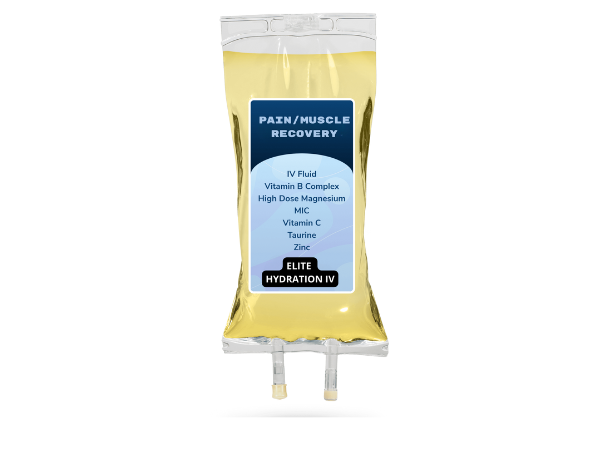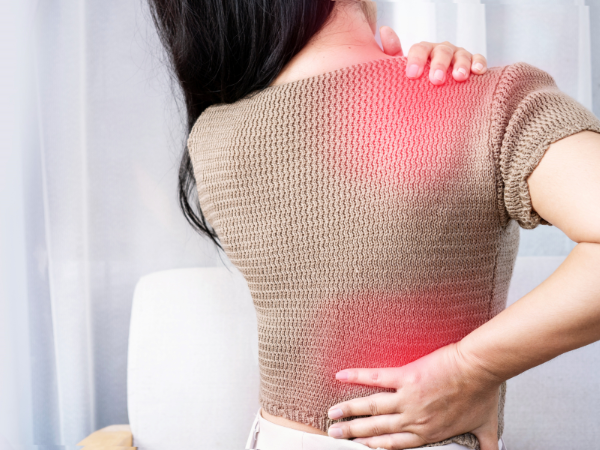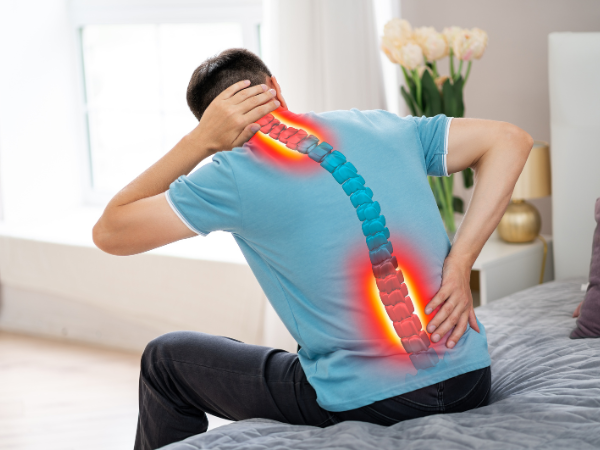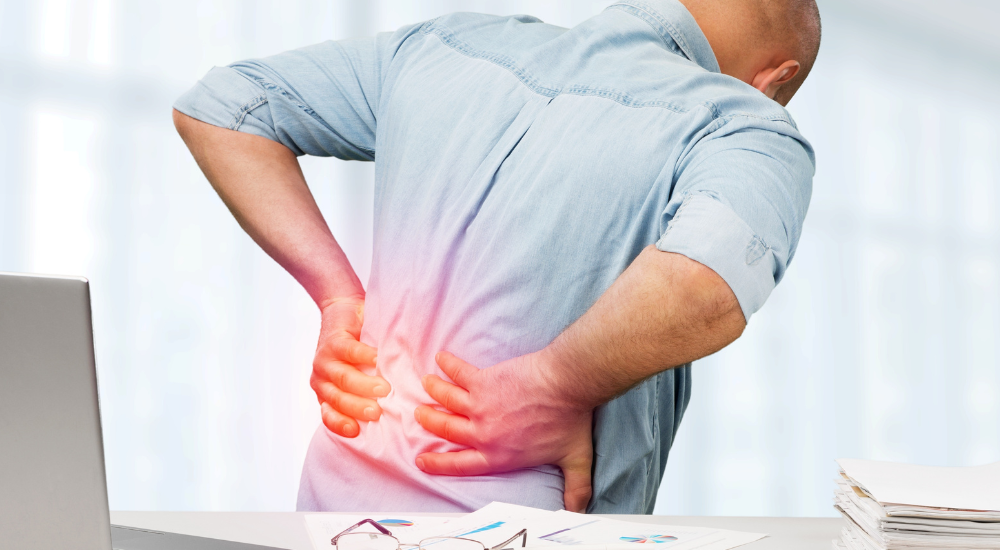Tight muscles can lead to back pain by causing imbalances and restricting movement. This can strain the spine and surrounding tissues.
Back pain is a common issue affecting millions worldwide. Tight muscles often contribute significantly to this problem. They limit flexibility, causing improper body mechanics and posture. This places extra stress on the spine, leading to discomfort and pain. Factors like poor ergonomics, lack of exercise, and stress can cause muscle tightness.
Addressing these factors through stretching, strengthening exercises, and proper ergonomics can help alleviate back pain. Consistent care and attention to muscle health are crucial for preventing and managing back pain. Understanding the connection between tight muscles and back pain is vital for effective pain relief and overall well-being.
Causes Of Muscle Tightness
Understanding the causes of muscle tightness can help in preventing and managing this discomfort. Muscle tightness can arise due to several factors, which we will explore under specific subheadings.
Poor Posture
Poor posture is a significant cause of muscle tightness. When you slouch or hunch, your muscles are forced into unnatural positions. Over time, this leads to muscle fatigue and tightness. Here are some common scenarios:
- Slumping at a desk: Sitting for long hours with a rounded back.
- Text neck: Looking down at your phone for extended periods.
- Improper lifting: Bending at the waist instead of the knees.
These habits strain the muscles, causing them to tighten up. A good posture keeps the spine aligned and muscles balanced. Here are some quick posture tips:
| Tip | Description |
|---|---|
| Sit up straight | Keep your back straight and shoulders relaxed. |
| Adjust your screen | Ensure your computer screen is at eye level. |
| Take breaks | Stand and stretch every 30 minutes. |
Overuse Or Strain
Muscle overuse or strain is another common cause of tightness. Engaging in repetitive activities can overwork muscles. This is particularly true for jobs or sports that require constant movement. Here are some examples:
- Heavy lifting: Repeatedly lifting heavy objects strains muscles.
- Sports: Activities like running or cycling can overuse certain muscle groups.
- Manual labor: Jobs that involve continuous physical effort.
When muscles are overused, they do not get time to recover. This can lead to tightness and pain. To prevent muscle strain, consider these tips:
- Warm-up: Always warm up before engaging in physical activities.
- Proper technique: Use the correct form to minimize strain.
- Rest: Allow your muscles to rest and recover.
By understanding and addressing these causes, you can reduce muscle tightness and alleviate back pain.

Best Solution IV Therapy for Muscle Recovery
IV therapy for muscle recovery replenishes essential nutrients and hydrates the body quickly. It can reduce muscle soreness and enhance recovery.
Impact On The Spine
One of the leading causes of back pain is tight muscles. These tight muscles can significantly impact the spine and lead to various problems. Understanding how tight muscles affect your spine can help you take steps to alleviate and prevent back pain.
Effects On Alignment
Tight muscles can cause your spine to become misaligned. When muscles are tight, they pull on the bones of the spine. This can lead to poor posture and misalignment. Misalignment of the spine can cause several issues, including:
- Uneven pressure on spinal discs: This can result in herniated discs.
- Strain on ligaments and tendons: This can cause inflammation and pain.
- Imbalanced muscle groups: One side of the body may become stronger, pulling the spine out of its natural curve.
When the spine is misaligned, it can lead to chronic pain and discomfort. Misalignment can also affect your mobility and flexibility. It is essential to address muscle tightness to maintain proper spinal alignment and overall spinal health.
Pressure On Nerves
Tight muscles can also put pressure on the nerves in your back. When muscles are tight, they can compress the nerves that run through and around the spine. This can lead to several symptoms, including:
- Numbness and tingling: You may feel these sensations in your back, legs, or arms.
- Sharp, shooting pain: This pain can radiate from your back to other parts of your body.
- Muscle weakness: Pressure on nerves can cause muscles to weaken, making it difficult to perform daily activities.
Pressure on nerves can be very painful and debilitating. It can affect your ability to move and perform everyday tasks. Addressing muscle tightness can help relieve this pressure and reduce nerve-related pain. Stretching, massage, and physical therapy can all help loosen tight muscles and alleviate pressure on nerves.

Symptoms Of Back Pain From Tight Muscles
Understanding the symptoms is crucial for effective management and relief. Recognizing these symptoms early can prevent the pain from becoming chronic and impacting your daily life. This section explores the common signs you might experience if tight muscles are causing your back pain.
Dull Ache Or Sharp Pain
Tight muscles in the back can lead to a variety of pain sensations. The most common symptom is a dull ache or a sharp pain that can be localized or radiate to other areas. This pain can vary in intensity and may worsen with certain activities or movements.
Some typical characteristics include:
- A constant, low-level ache that persists throughout the day.
- Sudden, sharp pain that can occur with movements such as bending or twisting.
- Pain that intensifies after physical activity or prolonged periods of inactivity.
These pain sensations often indicate that the muscles in your back are under strain, possibly due to poor posture, overuse, or an underlying condition.
Here’s a quick comparison of the types of pain you might experience:
| Type of Pain | Description |
|---|---|
| Dull Ache | A low, consistent pain that can be nagging and persistent. |
| Sharp Pain | An intense, sudden pain that may be triggered by specific movements. |
Limited Range Of Motion
Another common symptom of back pain from tight muscles is a limited range of motion. Tight muscles can restrict your ability to move freely, leading to stiffness and discomfort.
This can manifest as:
- Difficulty bending forward or backward.
- Stiffness when trying to twist your torso.
- Reduced flexibility in your back and neck.
Limited range of motion can make everyday tasks challenging. Simple activities like reaching for an item on a shelf or tying your shoes can become difficult and painful.
To summarize the impact on movement:
| Movement | Effect |
|---|---|
| Bending | Difficulty and pain, especially when bending forward or backward. |
| Twisting | Stiffness and limited ability to rotate the torso. |
| Flexibility | Overall reduced flexibility in the back and neck areas. |
Understanding these symptoms can help you identify if tight muscles are the culprit behind your back pain. This knowledge is essential for seeking appropriate treatment and improving your quality of life.

Prevention And Management
Proper prevention and management techniques can help alleviate this issue. Simple lifestyle changes and exercises can make a significant difference in reducing back pain caused by tight muscles.
Stretching And Strengthening Exercises
Stretching and strengthening exercises are crucial for preventing and managing back pain. Stretching helps to increase flexibility and relieve muscle tension. Strengthening exercises build muscle support around the spine, reducing the risk of injury.
Here are some effective stretching exercises:
- Hamstring Stretch: Sit on the floor with legs straight. Reach for your toes and hold for 20 seconds.
- Cobra Stretch: Lie on your stomach, lift your chest up, and hold for 15 seconds.
- Child’s Pose: Kneel on the floor, sit back on your heels, and stretch your arms forward, holding for 30 seconds.
Consider these strengthening exercises:
- Plank: Hold a push-up position for 30 seconds, focusing on keeping your back straight.
- Bridge: Lie on your back with knees bent, lift your hips, and hold for 15 seconds.
- Superman: Lie face down, lift arms and legs simultaneously, and hold for 10 seconds.
| Exercise | Duration | Repetitions |
|---|---|---|
| Hamstring Stretch | 20 seconds | 3 times |
| Plank | 30 seconds | 2 times |
| Bridge | 15 seconds | 3 times |
Proper Ergonomics
Proper ergonomics in daily activities can prevent back pain caused by tight muscles. Ensuring your workspace is set up correctly reduces strain on your back.
Key ergonomic tips include:
- Chair Position: Use a chair that supports your lower back. Keep your feet flat on the ground.
- Monitor Height: The top of your monitor should be at eye level to avoid neck strain.
- Desk Setup: Keep your keyboard and mouse within easy reach to prevent overreaching.
Follow these guidelines for better ergonomics:
- Standing: Use a footrest to shift weight occasionally.
- Lifting: Bend your knees and keep your back straight when lifting heavy objects.
- Breaks: Take short breaks to stand up and stretch every 30 minutes.
| Ergonomic Practice | Benefit |
|---|---|
| Chair Position | Supports lower back |
| Monitor Height | Prevents neck strain |
| Desk Setup | Reduces overreaching |
Professional Help
Seeking professional help can significantly alleviate this pain and promote muscle recovery. Experts use various techniques to address muscle tightness and related back pain.
Iv Therapy For Muscle Recovery
IV therapy provides a direct way to deliver essential nutrients to your muscles. This therapy can help reduce muscle tightness and back pain. Here are some key benefits:
- Quick absorption: Nutrients bypass the digestive system, entering the bloodstream directly.
- Hydration: IV fluids help hydrate muscles, reducing cramping and tightness.
- Essential vitamins and minerals: These nutrients support muscle repair and recovery.
IV therapy often includes a mix of:
| Component | Benefit |
|---|---|
| Vitamin C | Boosts collagen production for muscle repair |
| Magnesium | Relaxes muscles and reduces cramps |
| B Vitamins | Support energy production and muscle function |
Many athletes and individuals with chronic pain use IV therapy for faster muscle recovery. It is a safe and effective way to manage back pain caused by tight muscles.
Physical Therapy
Physical therapy is another effective method for addressing tight muscles and back pain. Trained therapists use various techniques to improve muscle flexibility and strength. Key aspects of physical therapy include:
- Stretching exercises: These help lengthen tight muscles, reducing pain.
- Strength training: Building muscle strength supports the spine and prevents future pain.
- Manual therapy: Therapists use hands-on techniques to manipulate muscles and joints.
Physical therapy sessions often involve:
- Initial assessment to identify problem areas.
- Customized exercise plans to target tight muscles.
- Ongoing evaluation to track progress and adjust treatments.
Physical therapy can significantly improve flexibility and reduce back pain. It offers a holistic approach to muscle recovery, ensuring long-term relief and better mobility.






